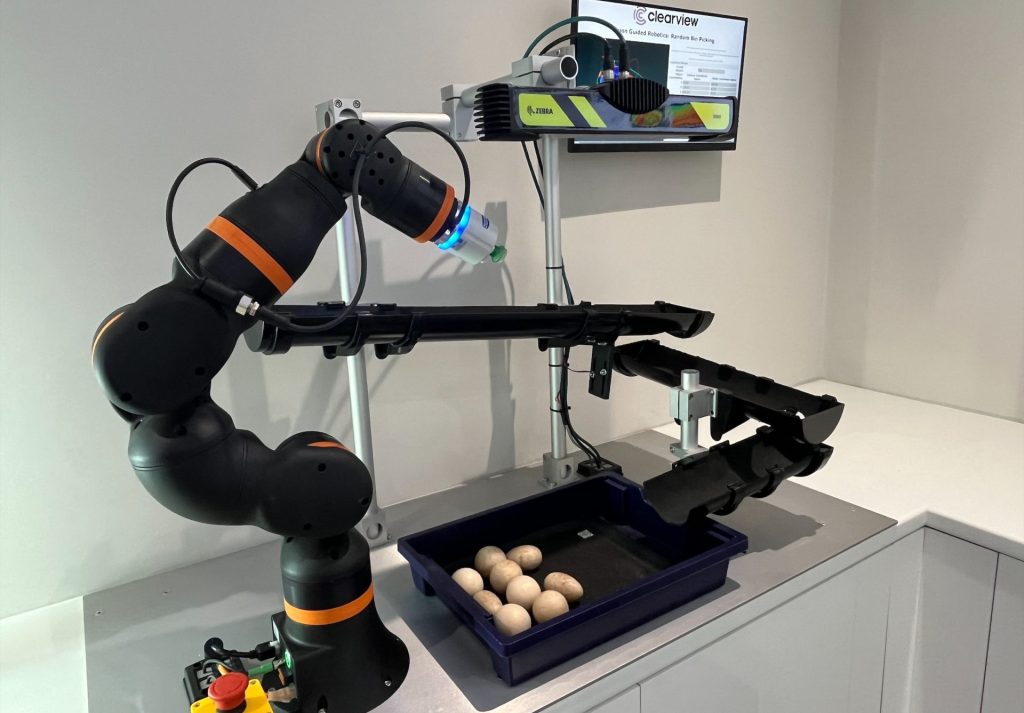Last week (July 1), Zebra Technologies and Clearview announced the launch of an industrial automation Centre of Excellence in Oxfordshire. The centre will be a resource offering relevant services, training, advisory and practical demonstrations for manufacturing and logistics organisations and machine vision specialists across the EMEA region.
The Manufacturer attended the opening event and has since sat down with Laith Marmash, Global Channel Strategy at Zebra Technologies to further discuss the purpose of the new centre, the sectors interest and how it differs from what’s already out there…
What was the driving force behind launching the Centre of Excellence now and why was Oxfordshire chosen as its location?
LM: The centre responds to the needs of manufacturing and logistics companies who want to implement intelligent automation solutions, gain more visibility into their assets and inventory, and better connect their frontline. The centre also responds to the technology and knowledge needs of machine vision builders and systems integrators who are the trusted advisors and collaborators end users are turning to for help. Advances in hardware, software, 3D and deep learning mean there is lots of requests for upskilling and knowledge sharing in the sector.
The centre is located at Clearview’s new, state-of-the-art European headquarters located in Thame, Oxfordshire. The region has a thriving innovation scene with universities, business parks and research centres. It’s also well-connected to London and Birmingham regional and international transport hubs, and a short drive from Zebra’s own headquarters in Bourne End.
How will the centre help manufacturers and logistics companies overcome the challenges of adopting machine vision, AI and 3D technologies?
LM: The Centre will initially focus on offering three things. First, specialised training courses delivered by Clearview’s expert team under the leadership of Allan Anderson, Clearview’s founder and managing director. The courses will feature vertical and technology specific content that matches the needs and experience level of the end user or machine vision provider taking the course.
Second, the team will offer unique solution evaluations. This means customers and machine vision specialists can come to the centre with their proof of concept solution and samples of data and receive a very valuable assessment by the centre’s machine vision specialists using the centre’s facilities. This provides valuable advice early on the solution process and helps take the risk out developing a solution.
Third, networking and confidence building. The centre will bridge the gap between the technologies and user knowledge, as we know it can find it hard to keep up with the pace of technology innovation. We want end users and machine vision specialists to know that they can come to the centre, make new contacts and see Zebra and Clearview as collaborators.
What types of customers or industries have shown the most interest so far and what use cases are you seeing emerge most frequently?
LM: Manufacturing industries are looking for industrial automation solutions across a range of operations. Manufacturing can be seen as a ‘heartbeat industry’ with things like output, hiring and orders taken as signs of an economy’s health, so it’s vital we support it. At a sub-vertical level, automotive, electric battery, electronics and semiconductor manufacturers are looking for machine vision solutions.
Use cases include quality and compliance inspection and defect and anomaly detection of materials, components, systems and finished products; vision-guided robotics (VGR) for inspection and sortation; high quality, granular 3D depth maps and point clouds; and AI-based optical character recognition (OCR) for labelling and packaging.
Specific customer examples include electric battery caps, automotive engine components, food packaging, automotive brake disks, and frozen food sortation.
Logistics could be called the arteries and veins of industries and society. Items on shelves, home deliveries and the timely movement of goods across land, sea and air all require efficient, connected logistics operations. 3PL and logistics operations within sectors such as retail, manufacturing and warehouse storage are seeking machine vision and AI-based OCR for first, middle and last mile inbound, outbound and reverse logistics and fast sortation and picking supported by VGR.
What makes the centre different from other training or innovation hubs — and how will it help bridge the gap between innovation and practical deployment?
LM: What sets this centre apart is that it’s built for business outcomes, not only product demos. It’s not only a showroom; it’s a working lab. It combines Zebra’s global technology leadership with Clearview’s deep system integration know-how and frontline training capabilities.
We’re not asking people to imagine how machine vision might work; we’re inviting them to test it, tweak it and prove it with their own samples and specs. That’s the bridge: taking ideas from theory to validated solution. Add to that the Zebra centre programme backing, roadmap access, partner training and technical support and you’ve got something unique
What challenges do you anticipate as the centre scales its offerings and reaches across the broader EMEA region?
LM: We’ve set the centre up at scale from the start, to meet the needs of end users and machine vision specialists across the EMEA region. Although it’s based in the UK, we’re EMEA focused – our launch day even had industrial automation partners from South Africa attending.
Zebra has offices, staff and machine vision partners across EMEA and so does Clearview. Allan and team have their own additional offices and partners in France, Spain, and Germany. And of course, there are growth plans, and we’ll be checking in with The Manufacturer when we’re ready to share more.
For more articles like this, visit our Automation channel.


